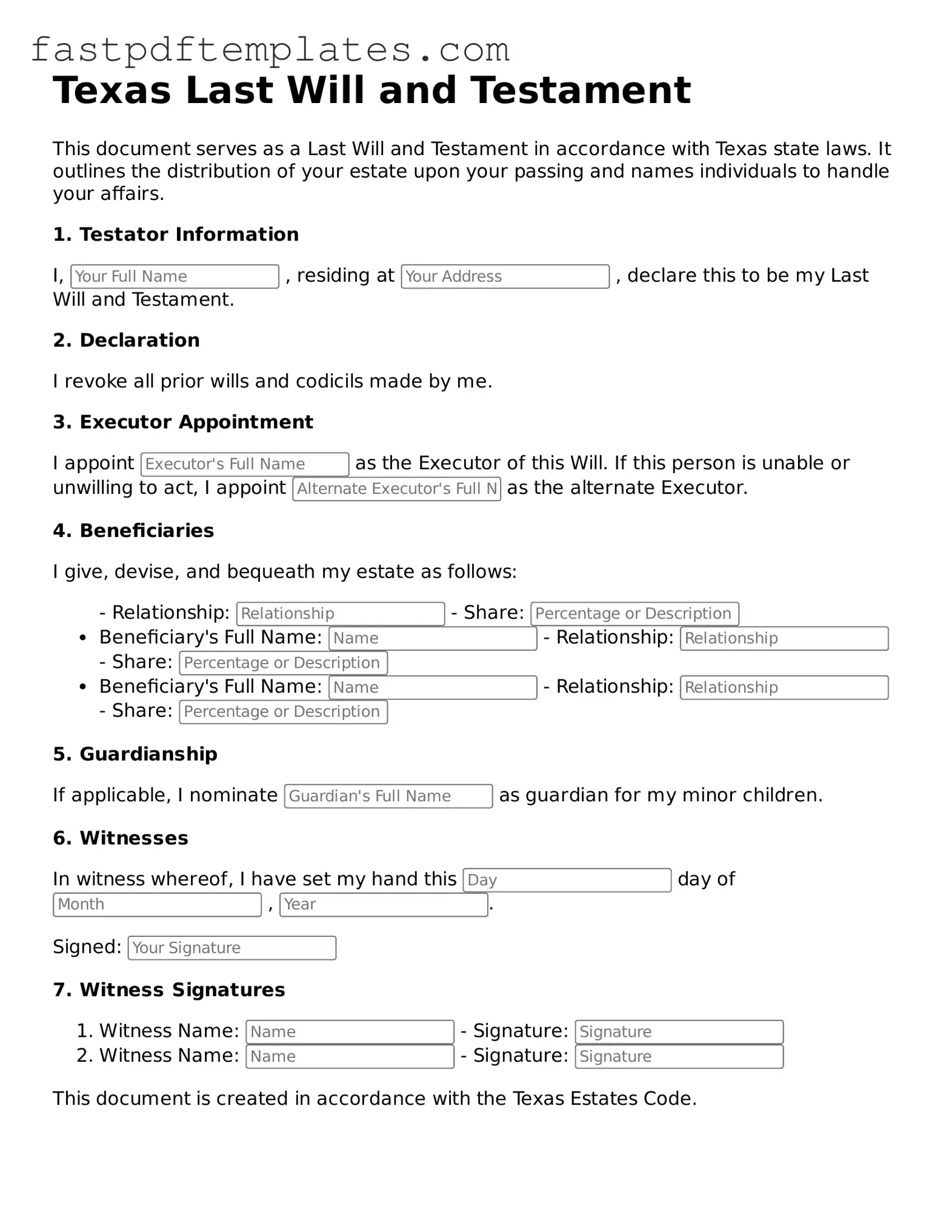Attorney-Approved Texas Last Will and Testament Document
A Texas Last Will and Testament form is a legal document that outlines an individual's wishes regarding the distribution of their assets after death. This form serves to ensure that a person's estate is managed according to their preferences, providing clarity and direction for loved ones. Understanding the components and requirements of this form is essential for anyone looking to create a valid will in Texas.
Access Document
